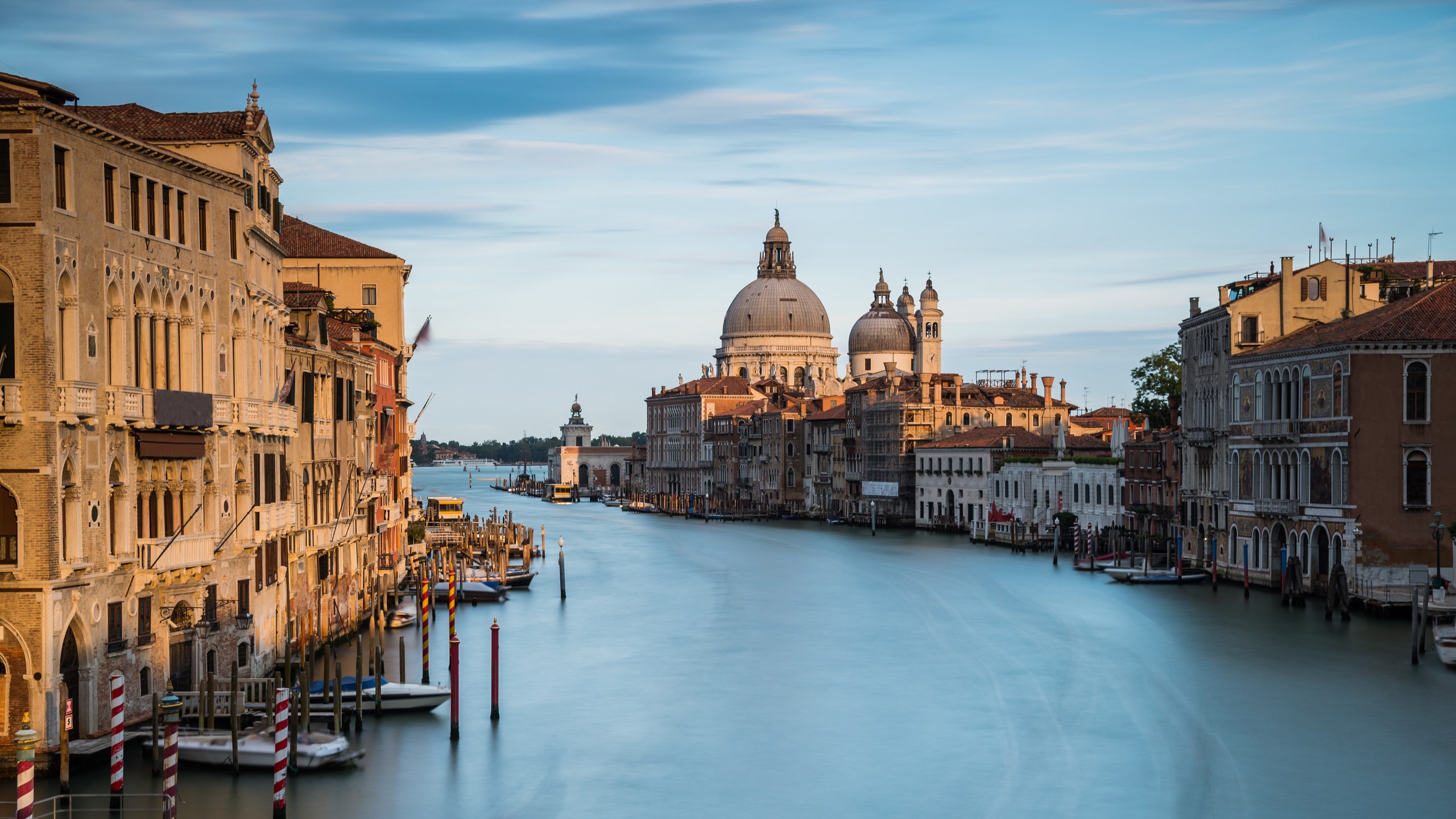Planning on passing through Venice after May? You may have to pay up to €10 ($11) just to enter the city center. In early January, the city's mayor Luigi Brugnaro tweeted an announcement that the city would be charging a tax for day visitors in 2019. And now, the details are in.
Starting this May, all day-trippers will have to pay €3 ($3.40) for access to the floating city, and in 2020, the fee will begin fluctuating between €3, €6 ($6.80), and €10 depending on the time of year and number of visitors. (The city sees around 24 million tourists who visit just for the day, without spending a night within the city center, each year.) All that revenue will be used to clean and maintain the city's lagoons and public spaces, and to supplement more security officers.
But don't expect to just hand over a few euros to a Venetian officer before stepping onto the isles. For now, the fee will be baked into the cost of train, water taxi, bus, and plane tickets, along with cruise reservations, according to Italian newspaper Venezia Today. In the future, though, the city hopes to implement a reservation system, where travelers can pre-pay the fee—and Venetian officials can have a better understanding of how many people are dropping in and out for the day.
Residents, tourists staying the night, students studying in Venice, and those who come into the city for work will all be exempt from paying the new fee. Another way to get out of paying it? Snag a Venezia Unica pass, which covers public transportation in the city and pre-paid entry to spots like the Doge’s Palaceand Peggy Guggenheim Collection.
This won't be the first measure the city has taken to combat overtourism and get the millions of visitors who trundle through its historic streets to keep things movin'. During one of the city's busiest holiday weekends in April, tourists were barred from visiting popular landmarks like the Piazzale Roma and the Santiago Calatrava-designed Constitution Bridge, to let locals go about their days without the usual crowds. In May, the city put strict regulations on fast food and kebab shops to keep people from settling with their food on the streets (it's already illegal to eat on the go in St. Marks). There was even a ban on sitting in public spaces enacted in September—law-breakers seated in an unauthorized location can be charged up to €500 ($570), the Independent reported.
For the most part, those laws—like the new tourist tax—are targeted at day-trippers. But the effects are far-reaching. As Traveler contributing editor Mark Ellwood reported late last year, some hotels and tours say the bans are scaring away too many tourists, who may have otherwise spent the night in the historic city, supporting hotels and restaurants that don't see a dime from the taxes overnight guests pay. (The overnight fee is based on high or low season, the hotel's location and guests' ages, and ranges from €3.50 to €5 per person, per night—or between $4 and $6.)
Of course, if you do want to avoid the headache by spending the night, we've got a few ideas of where to rest your head.
This story was originally published in January 2019 and has been updated with new information.

